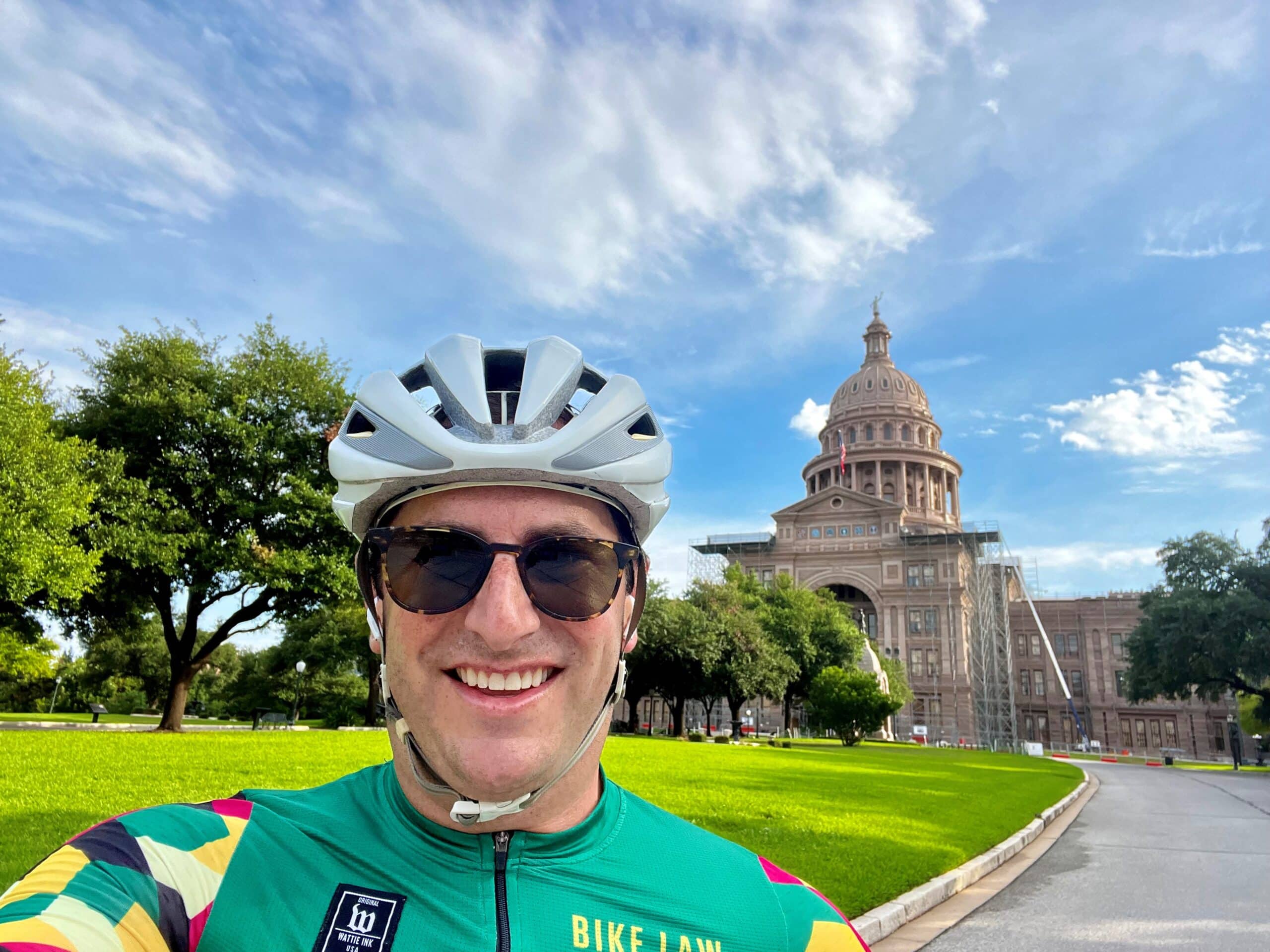A year ago, on July 3, 2016, a serious crash occurred in Knoxville, when a cyclist traveling in the bike lane was hit from behind by an out of control, uninsured, SUV, driven by a man whose license was revoked in 2015. The driver was not cited for violating any traffic infractions beyond failure to have insurance or registration and driving without a license under the municipal code. The maximum penalty allowable in municipal court is a $50.00 fine, which can be paid online. The driver was free to leave the crash scene, with no investigation as to the plausibility of his story, or whether there were any other contributing factors such as drugs or alcohol involved. The cyclist was rushed to the nearest level one trauma center with serious injuries.
Knoxville Bicyclists Feel Vulnerable and Ignored
The Knoxville bicycling community was up in arms and an outpouring of support for their friend ensued. A ride was organized and the media caught wind of it.
When the ride for justice, coupled with a letter drafted to the chief of police requesting that he revisit the investigation did not produce any results, the family of the injured bicyclist started an online petition addressed to the mayor, asking for justice for the cyclist. Nothing came of the petition. The news cycle passed, and the damage was done. Beware, if you read the narrative of the crash report attached, your blood pressure may rise.


As you can imagine, this incident left a deep wound, and distrust towards law enforcement in their handling of bike crashes in the cycling community, and the arrival of the one-year anniversary of this horrible crash makes the scar tender.
Tennessee Biking Laws
Tennessee has a safe passing law, requiring motorists to give cyclists 3 feet when overtaking them. With support from several city council members and the city administration, Bike Walk Knoxville was instrumental in getting a local safe passing law passed into ordinance in Knoxville in August of 2015. Tennessee also has a general catch-all safety law, known as the due care law, which offers protection to vulnerable roadway users from distracted motorists.
Neither the state safe passing law, which lands you in state general sessions court or the local safe passing law, which lands you in municipal court with the option of paying online, have been seeing much, if any, use by the local law enforcement agencies.
Tennessee 3 Foot Law Education and Enforcement
So, why not use all of the positive energy surrounding the successful USA Cycling Pro Nationals held in Knoxville last month, to attempt to restore the Knoxville cycling community’s trust in the Knoxville Police Department to properly investigate bike crashes, and at the same time bring a proven safe passing law education and enforcement campaign to Knoxville? Bike Law Tennessee and Bike Walk Knoxville are trying to make it happen.
Bike Walk Knoxville and Bike Law Tennessee arranged for Chattanooga Police Officer Rob Simmons to come to Knoxville and give two presentations ahead of the USA Cycling national championships. Officer Simmons spoke to a group of KPD officers about his successful campaign, the Chattanooga Safe Cycling Initiative. The Initiative involves training officers and educating motorists and cyclists ahead of an enforcement campaign which uses a 3-foot detection device mounted on a bicycle along with officer’s observations as a basis to stop motorists who pass cyclists within three feet. Officer Simmons brought the beta model of the three-foot detection device manufactured by Codaxus with him to Knoxville and demonstrated how to use it for the KPD officers. Our own Bike Law Charlie did a great write up about Officer Simmons’ Safe Cycling initiative. Once officers have taken a mandatory training on Tennessee bike laws, and how to investigate wrecks involving bicycles, the materials are saved on their cruiser computers, so they can access the materials in the field. Officer Simmons can see when Chattanooga officers access the training materials in the field, and he reports that his educational materials are being used by Chattanooga officers who respond to bike crashes.
The Chattanooga crash data is significant; bicycle crashes involving cars decreased by 25.8% from 2014 to 2015, over the year the Chattanooga Safe Cycling Initiative took place. 158 traffic stops using the 3-foot detection device were conducted during that year, resulting in 156 verbal warnings and 2 citations. The significance of this data was not lost on KPD when they were presented with it.
Officer Simmons followed his KPD workshop with a presentation attended by members of the Bike Walk Knoxville Advisory Board. The detection device was demonstrated a second time, and it was agreed that the Safe Cycling Initiative is an education and enforcement program that we all want to see come to Knoxville. A follow-up meeting was held between City Councilman George Wallace and Police Chief Rausch on the Friday before the 4th of July holiday, and Knoxvillians may soon see the 3-foot detection device in use. Officer Simmons is a true champion for this cause, and the data proves that his initiative has the potential to save lives and prevent serious injuries statewide.
As the one year anniversary passes, we should recall the injustice which occurred in the handling of the crash in the Henley Street bicycle lane, but rather than using it as an excuse for holding on to anger or grudges, we should instead feel hope and determination to work together with Knoxville Police Department as we move forward.










